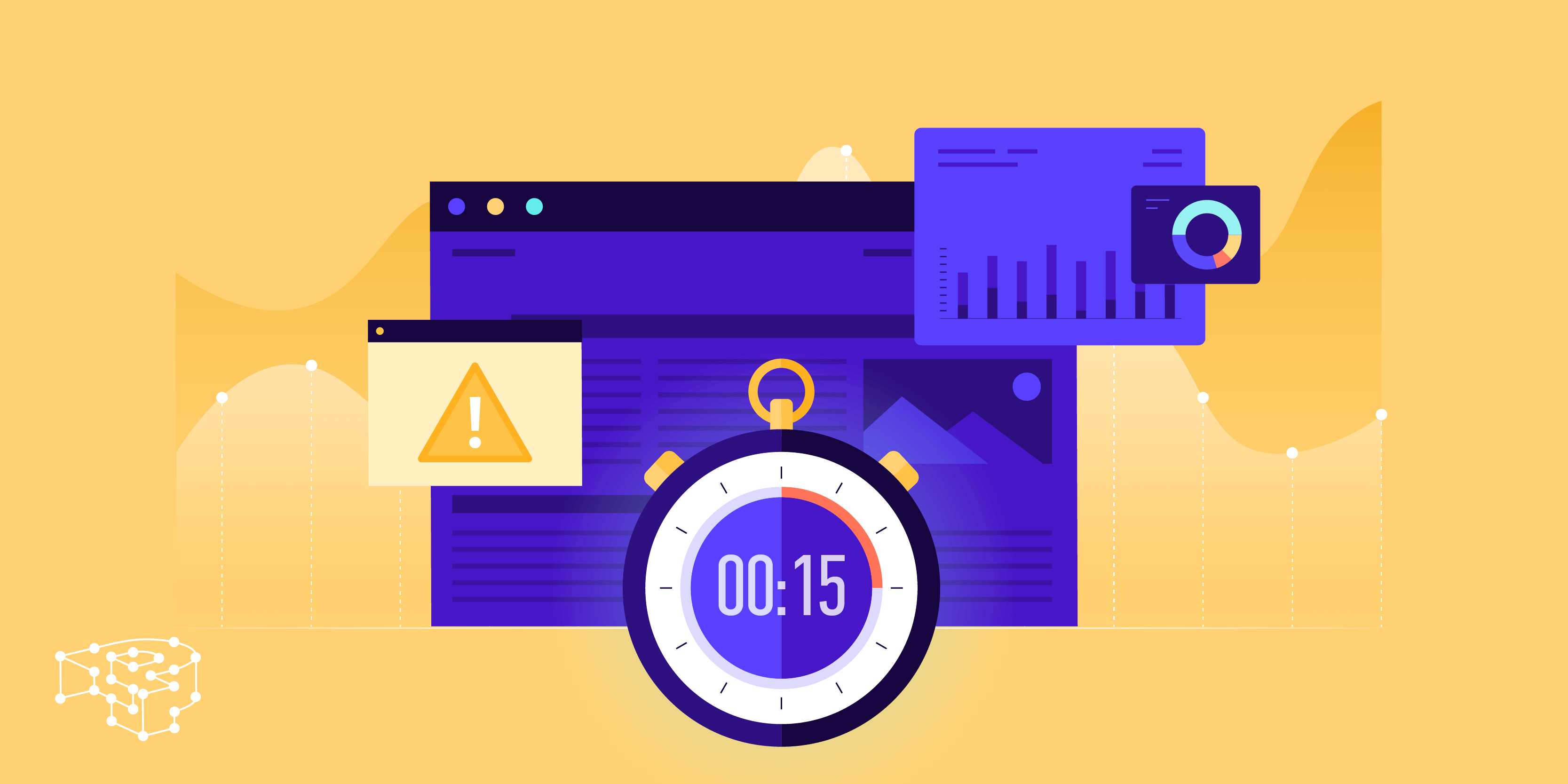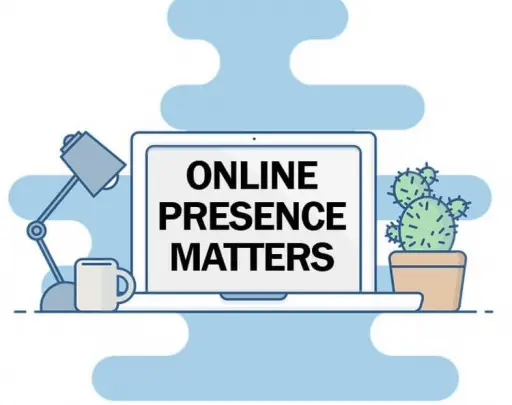What You Need to Know About Website Downtime and Monitoring Services
Explore everything about website downtime and how monitoring services can save your online presence. Learn about the tools, tactics, and technologies that can help you stay online 24/7.
Posted by
 Sabyr Nurgaliyev
Sabyr Nurgaliyev
What You Need to Know About Website Downtime and Monitoring Services
Introduction
In the fast-paced digital world, where every second counts, website downtime is a problem you can't afford. Whether you're running an e-commerce store, a blog, or a corporate website, unexpected downtime can lead to lost revenue, diminished customer trust, and a damaged reputation. But hey, don't sweat it! This article will walk you through everything you need to know about website downtime, including the importance of website monitoring and website monitoring services. We'll break down complex topics into bite-sized, easy-to-digest sections so you can keep your website running like a well-oiled machine.
What Is Website Downtime, Anyway?
Defining Website Downtime
First things first—what exactly is website downtime? In simple terms, it's the period when your website is inaccessible to users. This could be due to server issues, network problems, or even scheduled maintenance. Imagine trying to visit a site only to be greeted by an error message or a blank screen—frustrating, right? That's website downtime for you.
Why Does Website Downtime Happen?
Ah, the million-dollar question! Website downtime can occur for various reasons. It could be due to hardware failures, software glitches, or even cyberattacks. Sometimes, it's just plain old human error—oops! But no matter the cause, the impact is usually the same: a whole lot of headaches.
How Website Downtime Affects Your Business
Revenue Loss
Picture this: A potential customer is about to make a purchase on your site, but suddenly, your website goes down. Guess what? You've just lost a sale. When your website is down, you're not just losing visitors; you're losing money. According to a study by Gartner, the average cost of IT downtime is $5,600 per minute. Yep, you read that right!
Customer Trust
Trust is hard to earn but easy to lose. If your website is frequently down, customers may start to question your reliability. And in today's competitive market, where alternatives are just a click away, you can't afford to lose customer trust.
SEO Rankings
Google and other search engines aren't big fans of websites that are frequently down. If your site experiences frequent downtime, it could negatively impact your SEO rankings. Lower rankings mean less visibility, which could further harm your business.
What Are Website Monitoring Services?
An Overview of Website Monitoring
So, what's the big deal with website monitoring? In a nutshell, website monitoring services keep an eye on your website 24/7 to ensure it's up and running smoothly. These services alert you the moment your site goes down, so you can take immediate action. Think of it as having a security guard for your website, constantly on the lookout for trouble.
Types of Website Monitoring Services
Not all website monitoring services are created equal. Some offer basic uptime monitoring, while others provide comprehensive solutions, including performance monitoring, security scanning, and more. Let's break it down:
- Uptime Monitoring: Tracks whether your website is online or offline.
- Performance Monitoring: Checks how fast your website loads and performs under different conditions.
- Security Monitoring: Scans your site for vulnerabilities and potential threats.
How Do Website Monitoring Services Work?
Website monitoring services use various methods to check your website's status. They can ping your server, load web pages, or even run specific tests to ensure everything is functioning correctly. When something goes wrong, you'll receive an alert via email, SMS, or even a phone call—whatever works best for you.
Why You Need Website Monitoring Services
The Importance of Real-Time Alerts
Imagine your website goes down at 3 AM, and you don't find out until 9 AM—ouch! That's where real-time alerts come in handy. With website monitoring services, you'll get an immediate notification the moment your site goes down, allowing you to fix the issue before it spirals out of control.
Minimizing Downtime
The faster you can react to website downtime, the less impact it will have on your business. Website monitoring services help you minimize downtime by enabling quick fixes. Some advanced services even offer automated recovery options, reducing downtime to mere seconds.
Enhancing User Experience
Nobody likes a slow website. With performance monitoring, you can ensure your website loads quickly and efficiently, providing a better user experience. After all, a happy visitor is more likely to become a paying customer.
Choosing the Right Website Monitoring Service
What to Look For
When it comes to selecting a website monitoring service, not all are equal. You need to consider various factors, such as the types of monitoring offered, the frequency of checks, and the alert methods available. Let's dive into some must-have features:
- Comprehensive Monitoring: Look for a service that offers a range of monitoring options, from uptime to security.
- Flexible Alerts: Ensure the service provides alerts via multiple channels—email, SMS, phone, or even Slack.
- Detailed Reports: Choose a service that offers in-depth reporting, so you can analyze and improve your site's performance.
Popular Website Monitoring Tools
There are plenty of website monitoring services out there, but which ones are worth your time? Here are a few popular options:
- Pingdom: Known for its user-friendly interface and real-time alerts.
- UptimeRobot: A free tool that offers basic uptime monitoring.
- Site24x7: Provides comprehensive monitoring, including performance and security checks.
The Costs of Website Monitoring Services
Free vs. Paid Services
You might be wondering, "Can I get website monitoring for free?" The answer is yes—but with limitations. Free services often come with basic features and limited checks. If you're running a serious business, investing in a paid service is usually worth it for the added features and peace of mind.
What Affects the Price?
The cost of website monitoring services can vary widely based on several factors:
- Frequency of Checks: More frequent checks usually mean higher costs.
- Number of Monitored Websites: Monitoring multiple websites can increase the price.
- Additional Features: Extras like performance and security monitoring often come at a premium.
The Impact of Downtime on SEO
How Downtime Hurts Your Rankings
Did you know that website downtime can impact your SEO? Search engines like Google prioritize user experience, and a down website doesn't offer a great one. Frequent downtime can lead to lower rankings, making it harder for potential customers to find you online.
Recovery After Downtime
If your website goes down, all is not lost! Once you've resolved the issue, there are steps you can take to recover your SEO rankings. Submit a reindexing request to Google, and consider improving your site's overall performance to make up for lost time.
How to Measure Downtime
Key Metrics to Track
Measuring website downtime isn't just about knowing when your site is down—it's about understanding the impact. Key metrics to track include:
- Uptime Percentage: The percentage of time your site is online.
- Mean Time to Recovery (MTTR): The average time it takes to restore service after downtime.
- Frequency of Downtime: How often your site experiences downtime.
Tools for Measuring Downtime
Several tools can help you measure and analyze website downtime. Some popular options include:
- Google Analytics: Offers insights into user experience and site performance.
- Pingdom: Provides detailed reports on uptime and downtime.
- New Relic: Monitors performance and uptime, with advanced analytics.
Preventing Website Downtime
Best Practices for Uptime
Preventing website downtime is all about being proactive. Here are some best practices to keep your site up and running:
- Regular Backups: Always have a recent backup, so you can quickly restore your site if something goes wrong.
- Update Software: Outdated software is a common cause of downtime. Regular updates can prevent many issues.
- Use a Content Delivery Network (CDN): A CDN can distribute your content across multiple servers, reducing the risk of downtime.
Disaster Recovery Plans
Even the best-laid plans can go awry, so it's essential to have a disaster recovery plan in place. This plan should outline the steps you'll take if your site goes down, including who to contact and how to restore service quickly.
FAQs
1. What is website downtime?
Website downtime is the period when your website is inaccessible to users due to various issues like server failures, network problems, or maintenance.
2. How does website downtime affect my business?
Website downtime can lead to lost revenue, diminished customer trust, and lower SEO rankings, all of which can harm your business.
3. What are website monitoring services?
Website monitoring services are tools that continuously check your website's status and alert you when it goes down, helping you minimize downtime.
4. Are free website monitoring services worth it?
Free services can be useful but often come with limitations. Paid services usually offer more comprehensive monitoring and better features.
5. How does downtime affect SEO?
Frequent downtime can lower your site's SEO rankings, making it harder for potential customers to find you online.
6. How can I prevent website downtime?
Prevent website downtime by implementing regular backups, updating software, and using a Content Delivery Network (CDN).
Conclusion
In the ever-evolving digital landscape, website downtime is a challenge that every business must confront. But with the right website monitoring services in place, you can minimize downtime, protect your revenue, and maintain customer trust. Remember, an ounce of prevention is worth a pound of cure. By choosing the right tools and adopting best practices, you can keep your website running smoothly and your business thriving.
Related Articles

Discover how website monitoring can revolutionize your online business. Learn about cutting-edge tools, best practices, and expert strategies to ensure your website's peak performance and user satisfaction.
 Sabyr NurgaliyevNov 9, 2024
Sabyr NurgaliyevNov 9, 2024
Discover how website monitoring can revolutionize your online business. Learn about cutting-edge tools, best practices, and expert strategies to ensure your website's peak performance and user satisfaction.
 Sabyr NurgaliyevNov 8, 2024
Sabyr NurgaliyevNov 8, 2024
Discover how website monitoring can revolutionize your online business. Learn about cutting-edge tools, best practices, and expert strategies to ensure your website's peak performance and user satisfaction.
 Sabyr NurgaliyevNov 7, 2024
Sabyr NurgaliyevNov 7, 2024
Discover how website monitoring can revolutionize your online business. Learn about cutting-edge tools, best practices, and expert strategies to ensure your website's peak performance and user satisfaction.
 Sabyr NurgaliyevAug 28, 2024
Sabyr NurgaliyevAug 28, 2024
Explore the causes, effects, and solutions for website downtime to ensure your online presence remains strong and reliable.
 Sabyr NurgaliyevAug 22, 2024
Sabyr NurgaliyevAug 22, 2024
Discover how website monitoring apps, network uptime monitors, and uptime services ensure your online presence remains uninterrupted. Learn about the importance of downtime monitoring and server uptime.
 Sabyr NurgaliyevAug 21, 2024
Sabyr NurgaliyevAug 21, 2024